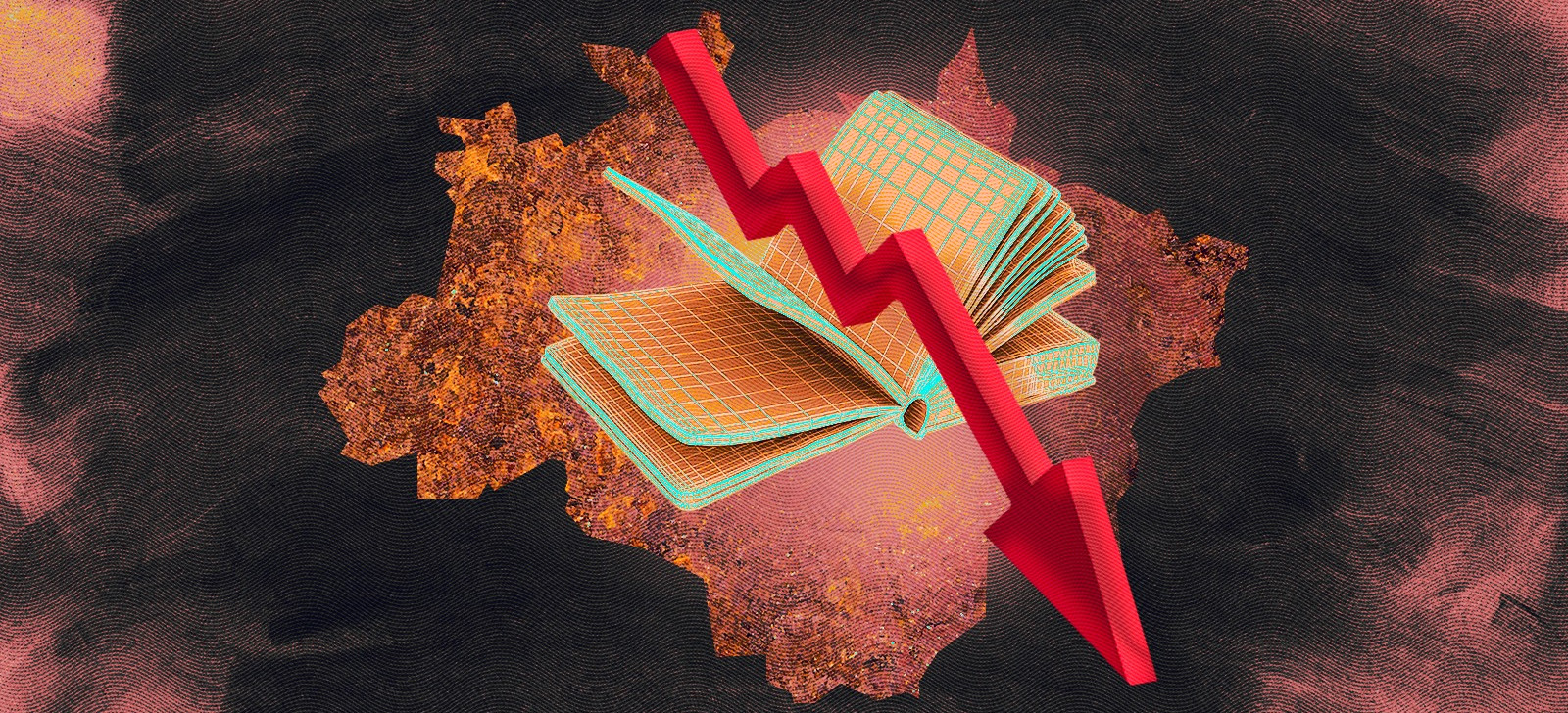Amazon states record decline in school enrollment
27 de February de 2025

By Ana Pastana – From Cenarium
MANAUS (AM) – The states of Amapá and Roraima show low school attendance compared to other Federation Units (UF). The data comes from the “2022 Demographic Census: Education,” released by the Brazilian Institute of Geography and Statistics (IBGE) this Wednesday, the 26th. The study also showed that Maranhão, in the Northeast region, has the lowest proportion of people with a completed higher education degree.
According to the data released by the survey, Amapá has the lowest preschool attendance rate among children aged 0 to 3 years and 4 to 5 years. The numbers indicate that among children aged 0 to 3 years, only 12.0% attend school or daycare. Among the population aged 4 to 5 years, the rate is 65.0%.
The state of Roraima also stands out with the lowest school attendance rate among different age groups. According to the data, among young people aged 18 to 24 years, only 24.0% attend school. Meanwhile, the top rankings belong to the Federal District and São Paulo, respectively.
For political scientist and lawyer Valdir Pucci, the low enrollment numbers in the North region reveal the social difficulties caused by its geography. He states that the North has always been marked by large demographic gaps and transportation challenges, which impact even the supply of essential resources for educational development, such as transportation and communication infrastructure.
“It is different, for example, from regions like the Center-South or Southeast, where infrastructure itself facilitated access to education. Moreover, we must remember that education is not just about having schools but also depends on transportation and technology reaching these areas for the development of education,” said the scientist.
Higher Education
Regarding higher education among people aged 25 or older, Maranhão has the lowest proportion compared to the other Federation Units, with 11.1%. The research also points out that Maranhão has remained in the same position since the 2000 Census when only 1.9% of the population aged 25 or older had completed higher education.
The capitals Belém (PA), São Luís (MA), and Manaus (AM) appear in the indicators measuring the average number of years of education completed by people, considering age groups, gender, and race or ethnicity.
The capital of Pará has an average of 12.0% of white people with the highest number of years of education. Meanwhile, the percentage for Black individuals is 10.3%, for Asians 13.3%, for mixed-race people 10.7%, and for Indigenous people 9.8%. The capital of Maranhão, São Luís, has an average of 12.0% of white people with higher years of education. Meanwhile, the percentage for Black individuals is 10.7%, for Asians 11.6%, for mixed-race people 10.8%, and for Indigenous people 10.6%.
Among the three capitals, Manaus has the lowest percentage compared to the other capitals of the Legal Amazon mentioned above. The percentage of white individuals with the highest number of years of education in Manaus is 11.5%, while for Black individuals, it is 9.9%, for Asians 13.3%, for mixed-race people 10.6%, and for Indigenous people 9.5%.
The lowest average number of years of schooling among people aged 25 or older across all Federation Units is recorded in Breves, in the interior of Pará, with only 6.5 years.
Valdir Pucci added that the low figures indicate that discouraging the creation of an environment conducive to children’s school enrollment can be considered a political strategy to keep the population uninformed.
“We cannot ignore that the lack of education is also a political project in which many people believe that investing in education is not a guarantee of political success, as a more educated society, in the sense of being more literate, tends to be more critical, including towards the political class,” said the scientist.
Brazil Overview
From 2000 to 2022, the proportion of the country’s population aged 25 or older with higher education increased 2.7 times, from 6.8% to 18.4%. The percentage of people with no formal education or who did not complete elementary school dropped from 63.2% to 35.2%.
The proportion of the population in the same age range with a complete high school education and incomplete higher education rose from 16.3% to 32.2%. Meanwhile, those who completed elementary school but did not finish high school increased from 12.8% to 14.0%.
Read more: Life expectancy in the country reaches 76.4 years, according to IBGE.

